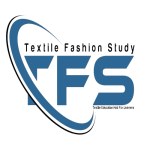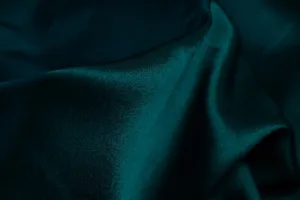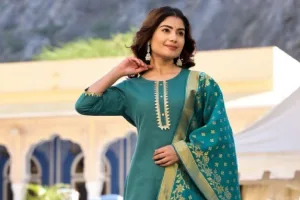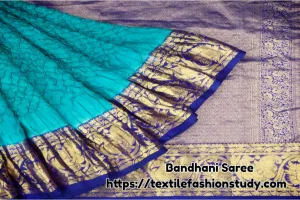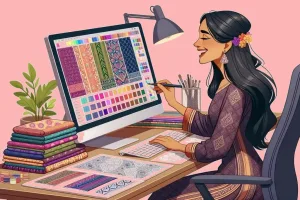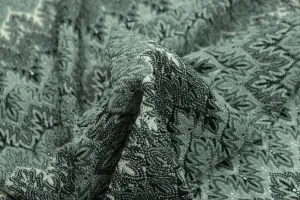Table of Contents
What is fashion draping?
Fashion draping is a technique that helps fashion designers to create clothing or garments directly on a dress form or mannequin.
Draping allows for a more practical and hands-on approach of manipulating cloth on a three-dimensional form for pattern production, which involves creating a design on paper before cutting and sewing the material to obtain the right shape, silhouette, and design of a garment. To improve the fit and conceptualization of the garment, designers may fold, pin, and shape the fabric. It is a crucial skill in the fashion design process since it enables the translation of design thoughts into real apparel and fosters creative experimentation.
Draping is a traditional aspect of textile creation, fashion design, and workmanship that dates back to ancient civilizations. Every technique offers a different viewpoint on form, fit, and design intent: flat pattern, modeling on the stand, or on-or off-form draping. The many varieties of fashion draping offer an intriguing jumble of styles and methods, ranging from conventional to transformational and innovative. We explore this fascinating topic and, in the process, discuss the often-overlooked economic consequences of draping—a practice that combines sustainability and profitability. To improve and expedite our approach to fashion design, it is equally necessary to comprehend the limitations associated with this art form.
History of Fashion Drapting
Fashion draping has been a fundamental technique in clothing creation for centuries, dating back to ancient civilizations. It has evolved significantly over time:
- Ancient Civilizations: Draping has its roots in the antiquated societies of Egypt, Mesopotamia, Greece, and Rome. There was very little cutting and stitching involved—garments were simply wrapped over the torso and fastened with pins or belts. Different styles of draping fabrics were used to make garments that represented a person’s ethnic identity and social standing.
- Middle Ages: During the Middle Ages, drapery remained a widely used method. Although more advanced tailoring methods and the use of patterns began to appear, draping remained the major way that clothing was made.
- Renaissance: A resurgence of interest in the ancient styles of Greece and Rome occurred during the Renaissance. Clothing was constructed mostly via drapery, which included hanging the items either directly over the wearer or on a dress form.
- 18th and 19th Centuries: Techniques for creating patterns and tailoring started to become more popular. Still, draping was essential, particularly in couture and high fashion. Dress forms were used to drape and work with fabrics, especially for intricate and expensive designs.
- 20th Century: Industrial processes and pattern-making became increasingly common as mass manufacturing and uniform size increased. Draping, however, continued to be an important technique in the production of couture and luxury clothing. Designers with a reputation for elegance and innovation, such as Madeleine Vionnet and Madame Grès, were renowned for their proficiency in drapery.
Even if technology and computer-aided design have had an impact on fashion design today, draping is still a crucial ability, particularly when creating couture, avant-garde, and high-end designs. It is prized for its capacity to produce distinctive, organic shapes that might be difficult to realize using conventional pattern-making methods. Draping is still emphasized by designers and fashion colleges as a vital ability in the creative process.
Examples of draped clothing from ancient periods
Certainly! Draped clothing was prevalent in various ancient civilizations, each with its unique styles and techniques. Here are a few examples:
- Tunics and Kalasiris: Men and women dressed in kalasiris and tunics, among other draped clothes. Egyptian ladies wore dresses-like garments called kalasiris, which were typically constructed of linen and slung over one shoulder.
- Chiton: Both men and women wore the chiton, which was a draped garment. It was only a plain rectangular piece of cloth with belts or fastenings at the shoulders to produce various draping techniques.
- Himation: The himation, a longer length of cloth that could be wrapped and draped in different ways, was an outer garment worn over the chiton.
- Togas: Roman people wore a well-known draped garment called the toga. It was a large piece of cloth that was draped over the body in particular ways to indicate the occasion and social standing of the wearer.
These clothes were usually composed of materials like wool or linen, and they were draped in numerous ways to produce varied looks. The occasion, gender, and cultural standards were frequently taken into consideration when choosing how to drape an item of clothing. These clothes were draped in a way that expressed cultural identity, prestige, and fashion in and of itself.
Tools for Fashion Draping
A specialized collection of equipment is needed for fashion draping in order to handle cloth on a dress form. These are a few necessary tools:
- Dress Form or Mannequin: An adjustable dress form that closely resembles the intended user in terms of size and dimensions is called a mannequin or dress form.
- Muslin cloth: A cheap, lightweight cloth used to make first designs and prototypes.
- Pins: To fasten the fabric to the dress form and make modifications, use straight pins.
- Patternmaking Ruler: A clear, gridded ruler is useful for measuring and producing precise patterns and straight lines.
- Shears/Scissors: Sharp fabric shears for trimming muslin and cloth.
- Marking Tools: fabric markers, washable markers, or chalk for short-term markings on cloth.
- Measuring tape: Utilized for precise body measurements and fabric length measures.
- Draper’s Tape: Draper’s tape is a robust, flexible tape that is used on dress forms for marking and measuring.
- Weights: Fabric is held in place on the dress form by small weights or hefty items.
- Sleeve Roll and Tailor’s Ham: These tools are used to assist drape and shape particular parts of clothing, such as curved sleeves.
- Sewing Machine and Serger: Although not utilized during the draping process, these devices are essential for producing the finished garment using the draped pattern.
Having these tools at hand ensures a smooth and efficient draping process, allowing for accurate manipulation and creation of garment designs.
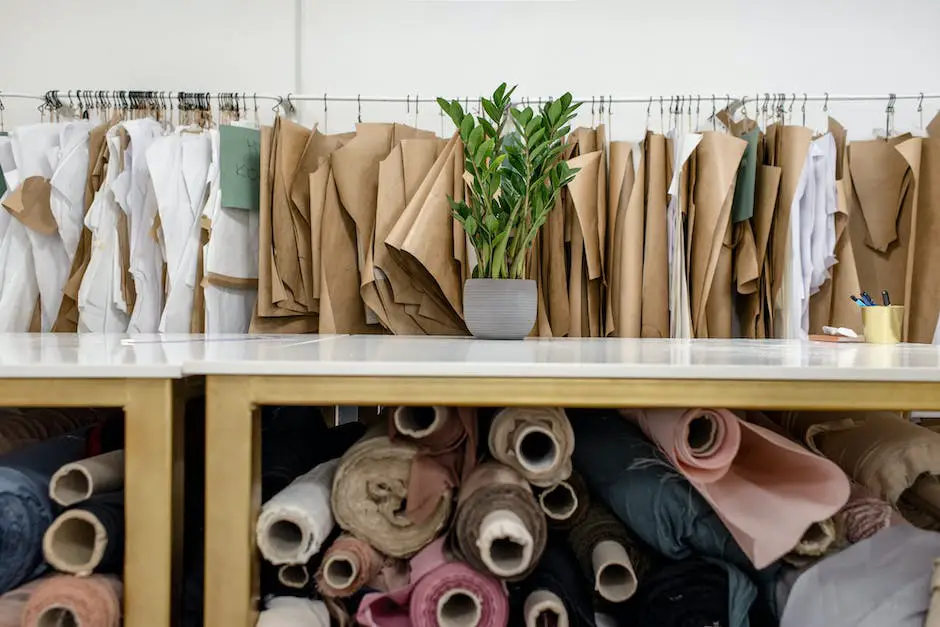
Fashion Draping Techniques
Fashion drapting is a step by step process. A designer can immediately develop the fundamental structure and pattern of a garment on a dress form by following a number of steps while draping a dress. The following steps are required for drapting a dress. They are-
- Choose the garment form: Select a mannequin or dress form whose dimensions correspond to those of the intended wearer.
- Accumulate Tools: Gather any other equipment that will be needed, along with fabric, pins, scissors, and muslin cloth for the first prototype.
- Get the muslin ready: Trim a length of muslin so that it covers the dress form.
- Protect the muslin: Make sure the muslin drapes uniformly on both sides when you drape it over the dress form.
- Pin the fabric: At strategic locations, such the shoulders, collar, and waistline, pin the muslin in place. In order to accommodate the form’s inherent features, smooth the cloth.
- Note important points: Mark important places such the neckline, armholes, waistline, and hemline using a marker or chalk.
- Manipulate the fabric: Fold, tuck, and pin the cloth to begin shaping the dress into the desired form.
- Form refinement: Make sure the drape is always in line with the planned design by making adjustments and refinements.
- Add details: Once the main construction of the dress is completed, add features like gathers, pleats, or any other design elements.
- Verify the fit: Make sure the cloth draped reflects the desired shape and appearance. Make the required changes to ensure proper fit and proportion.
- Complete the drape: After you are happy with the pattern, gently remove the dress off the form, taking note of where the marks and pins are placed.
- Move the design: After laying the muslin flat and gently removing the pins, mark the cloth with chalk or markers using the pins as a guide.
- Form a pattern: To make the dress pattern, trace and cut along the indicated lines.
- Test the pattern: Before cutting the dress’s genuine fabric, use the pattern to make a prototype in a less pricey fabric and make any necessary alterations.
It’s crucial to take regular breaks during the procedure to evaluate the draped dress’s overall appearance and fit and make any required alterations to produce the ideal design.
Understanding Fashion Draping Methods
Passionate creativity has a revolutionary potential that is never underrated. The development of fashion draping, or the process of placing and pinning cloth on a dress form, makes this quite clear. Fashion designers are able to express their ideas more freely and the process of creating clothing has been profoundly impacted by the combination of artistry and technically in this approach.
Fashion draping is so popular that it has even led to curriculum change at a number of fashion schools. Design schools all around the world are including draping classes into their curriculum since it’s a highly sought-after talent. The ability to envision and assess a garment’s functionalities, fit, and aesthetic appeal prior to manufacturing helps designers to make substantial progress toward bridging the gap between design and reality.
Traditionally, flat pattern drawing was the norm. The process of creating graphics on a flat surface that produced a two-dimensional illusion required intricate arithmetic and measurements. But with its far more dynamic and three-dimensional viewpoint, fashion draping has changed the game. Designers are now able to produce complex, inventive designs that appeal especially to a market that seeks differentiation and individuality.
These days, the fashion business honors creative intuition with novel approaches. Fashion draping has demonstrated to be one of these methods, resulting in a dynamic and revolutionary design approach. Above all, it has shown to be crucial in the making of haute couture clothing, where the intricate details of the design are only possible with the three-dimensional viewpoint that fashion draping offers.
There are two main styles of draping that have gained popularity and prevalence in today’s fashion industry – Moulage and Fluting. Both practices embody versatility, creativity, and artistry in their distinct ways.
Moulage: The process of moulage involves covering the dress form with a second skin. technique’s perfect for form-fitting designs since technique entails tightly draping the cloth over the shape to resemble the real curves of the human body. With this technique, the designer can see how the cloth moves on the body, expanding the potential for elegant designs that combine comfort and style.
Fluting: Fluting highlights the creative aspect of fashion draping. It entails forming soft waves in the cloth, which opens up a world of cutting-edge artistic possibilities. The method is particularly popular in haute couture, where the unique creative expression of the garment is just as important as its fit.
Fashion draping is one of the mainstay methods in the big theater of fashion, where the performance must always carry on with enthusiasm, vibrancy, and creativity. Its potential for future development is boundless, and it has a revolutionary effect on the industry’s design process. The need for fashion draping is only going to grow as haute couture and personalized designs become more popular, indicating a bright future.
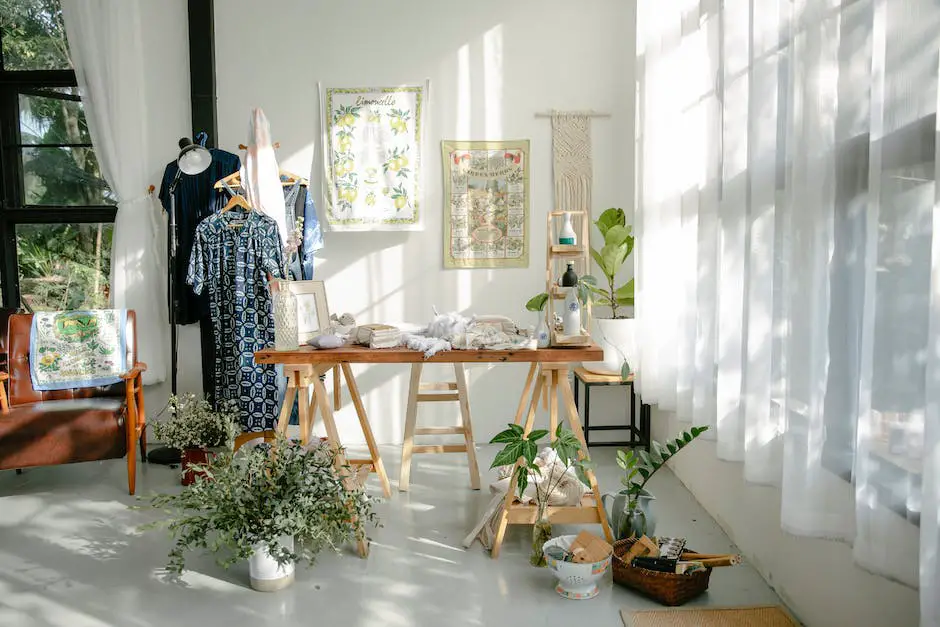
Types of Fashion Draping and their Innovations
In addition to Moulage and Fluting, we explore alternative draping methods here that preserve the long-standing origins of fashion draping in haute couture and everyday wear while fostering constant innovation within the vibrant fashion ecosystem.
Origami Draping: It is one such method that is done By folding the fabric rather than sewing it into a garment, a technique known as “origami shading” infuses the fabric with Japanese shadow art and gives the apparel a distinctive look that combines unusual aesthetics and practicality. The sculpture takes on more complexity and interest with each fold, which makes it a popular among designers who want to push the envelope and investigate the form outside of convention.
Cowl Draping: cowl draping is a throwback piece that has made a comeback in contemporary apparel. It works with fabric to produce dangling folds around the neckline or waist, giving the piece a dramatic impression and a hint of elegance. Cowl draping is a time-tested method that turns simple outfits into eye-catching statements, whether on flowing evening dresses or breezy shirts.
Bias Draping: It is a breakthrough in the field of draping popularized in the 1920s by fashion queen Madeleine Vionnet, is another popular invention in the field. It drapes on the bias, or diagonal, as it plunges into the fabric’s pliability. This produces a garment that essentially follows the natural curves of the body, offering the best possible balance between comfort and style.
Digital Draping: the disruptive power of technology is always present in the fashion sector, which never stops. The future of fashion is being quickly ushered in by digital drapery. Designers are able to electronically drape and shape clothing on digital figures by using 3D imaging and simulation-based software, which removes the physical limitations of traditional draping techniques. By allowing for previously unheard-of innovation in fabric manipulation, this elevates the importance of efficiency and environmentally friendly solutions.
Every breakthrough in the field of fashion draping that has been made over time not only demonstrates the expansion and development of this wonderful craft, but also fosters ongoing product innovation and satisfies the always shifting needs of the market. Companies may capitalize on the changing dynamics and strengthen their competitive advantage in this quick-paced market by keeping an eye on these developments.
Thus, it is not impossible to see a period when even more variations of fashion draping are in play, bringing AI, augmented reality, and other technology developments into the mix, as we stand on the cusp of continued advancements. Fashion draping has evolved from a simple method to a pivot of creativity that is shaping the industry’s future one fold at a time.
Benefits of Fashion Draping
Fashion draping is a process that combines creativity and pragmatism, and the present fashion industry is benefiting from it in terms of both commercial and creative richness. When we look above the aesthetic appeal of fashion draping, we find significant benefits that position it as a major player for companies looking to innovate and restructure their manufacturing methods.
Material wastage reduction: A primary advantage of fashion draping is its ability to decrease material waste throughout the manufacturing process. The fashion sector is responsible for 4% of the world’s trash, according a research published in the Journal of Cleaner Production. By shaping directly on the dress form, drapery enables designers to maximize fabric utilization and minimize waste. Draping operates on a subtractive process, as opposed to typical flat pattern forming processes, allowing the surplus to be employed elsewhere and resulting in a more cost-effective and sustainable procedure without sacrificing design or quality.
Powerful marketing tool: Fashion draping is a potent marketing strategy in addition to a creative process. A brand is expressing its dedication to quality and workmanship when it uses fashion draping. A rising segment of the market is drawn to businesses that exhibit originality and inventiveness in their designs and are prepared to pay a premium for handcrafted items. This group of customers finds these brands appealing.
Competitive edge: Additionally, drapes provide a competitive advantage in the emerging market. The practical requirements of ready-to-wear combined with the artistic ideals of couture have given rise to this movement. Deeper customization may be added to ready-to-wear by utilizing fashion draping techniques like origami, cowl, and bias draping, which enable distinctive designs that distinguish the company.
Less human error: Technological developments have also benefited fashion draping in a mutually beneficial way. For instance, the utilization of 3D images and simulation-based software in Digital Draping has completely changed the sector. Mass customisation becomes possible as a result, allowing for a more accurate reproduction of the couture look on a bigger scale while lowering production costs and human error.
Potential increase in profits: Furthermore, fashion draping has a huge potential to transform the fashion business in the future with the incorporation of AI and AR technology. Artificial intelligence aids in improved decision-making when it comes to fabric selection, comprehension of fibers and texture, and forecasting how materials will behave and drape in actual situations. Thus, these technologies have the potential to enhance design process optimization, boost productivity, and provide a faster time-to-market, all of which might lead to higher profitability.
Fashion draping, therefore, alters the game for businesses on several levels when it is included into design ideas. It’s an ethos that outlines an organization’s perspective on design, production, and marketing, not just a method. Practicality and sustainability are equally as important as beauty or creativity. Fashion draping promises to be a dynamic force that shapes how companies develop, manufacture, and promote their goods in the future in a way that is more efficient and sustainable as the industry develops.
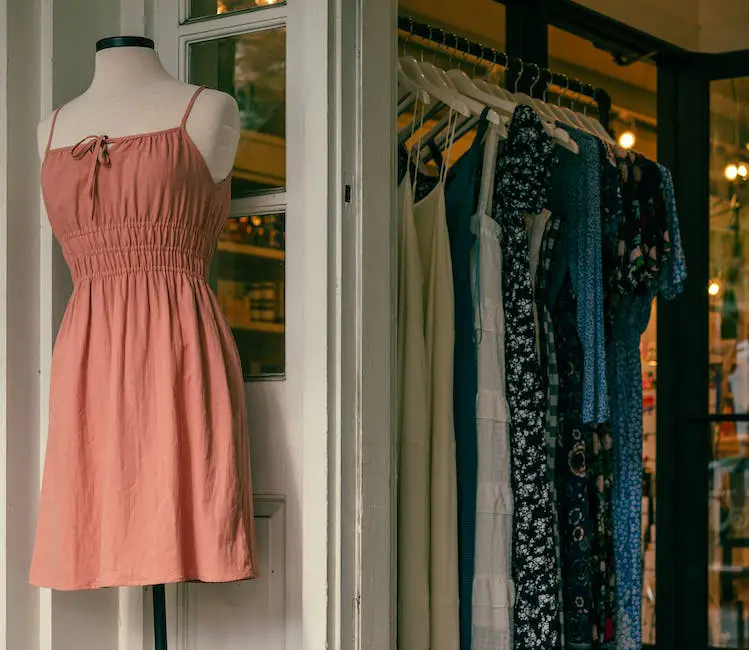
Limitations of Fashion Draping
As we explore the field of fashion draping further, we come into a few basic obstacles that, if not properly resolved, may prevent it from reaching its full potential. This fascinating method poses a distinct set of challenges in three key areas: the talent needed, the design process, and the increased price.
Fashion draping, with its very core of prioritizing form above utility, produces clothing that does more than just cover the body; it evokes deep emotions. The first problem that arises is the unpredictable nature of the design process. Draping on form, in contrast to traditional dressmaking techniques, does not rely on strict patterns or formulae. Every design turns becomes an investigation, a kind of voyage, with no assurance of a repeated result. While the essence of draped patterns is this spontaneity.
In a same spirit, the exceptional talent and knowledge needed for draping is another constraint. The artisanal expertise that is in greater demand is creating a skills gap in the sector. To tackle this issue, more comprehensive fashion education and training programs are needed. More learning environments that not only impart knowledge but also work to close the gap between tradition and innovation are desperately needed.
The third obstacle is the rising expenses that come with being in the drapery industry. Draping is a labor-intensive technique that demands meticulous attention to detail and quality control at every level, from prototype to final implementation. Time is a finite resource and a reliable way to calculate costs, hence its economic viability is negatively impacted.
Overcoming these challenges calls for creative problem-solving in addition to well-honed business tactics. By adding technology into the mix, potential answers to these issues could be discovered. Production problems may be reduced by using cutting-edge machinery to expedite the manufacturing process without sacrificing the uniqueness of handmade creations.
The talent gap may be filled in part by offering training courses that emphasize the clever fusion of traditional draping techniques with technology. In addition to producing a pool of highly qualified specialists for the business, partnerships with educational institutions that provide fashion and design programs may aid in educating the future generation of fashion draping aficionados.
Integrated marketing techniques that emphasize the value of painstakingly produced draped clothing and reaching out to consumers who value and can afford high-quality, unique items might help alleviate the pricing issue. Draped designs may find a niche market if the slow fashion trend was highlighted and customers who prioritize sustainability over quick fashion were the target audience.
To sum up, there are definitely challenges in using fashion draping as a common design method in the business. However, these obstacles may be skillfully overcome to fully realize the potential of this intriguing design process through a careful blending of age-old customs, cutting-edge technology, and flexible commercial tactics.
All things considered, fashion draping is a highly innovative art form with historical importance and the ability to completely change the business. For many fashion designers, its techniques and forms provide a creative high ground that pushes them beyond the boundaries of what is possible. It guarantees profitability, control, and cost-effectiveness while also promoting a sustainable design process. However, it is not without difficulties. Designers can improve their techniques by being aware of these limits, which might range from talent transportation concerns to fitting complications. The ability to critically analyze fashion drape is crucial for sustainable practices, company expansion, and innovative design as we continue to reshape the fashion and textile industry.
References:
- The Art of Fashion Draping—Connie Amaden -Crawford.
- Fashion Design: The Complete Guide, by John Hopkin
- Comdex fashion design by Dr.Navneet Kaur.
- Fashion Draping: Helen Joseph Armstrong.
- Basics of Fashion Design, Knitwear Design by Alexander McQueen, A/W09.
